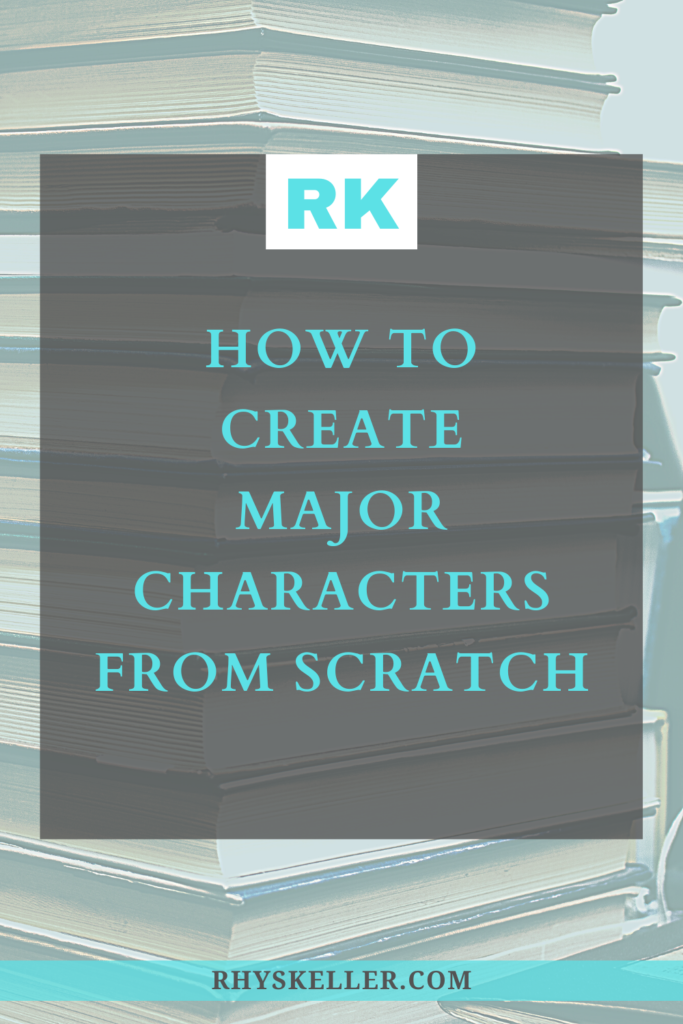Curious how authors create incredible leading characters from out of nowhere? Well, be curious no more! After reading these techniques, you will be able to create brilliantly believable characters your readers and listeners will love. In fact, you will want to re-visit some of your old characters and give them a new lease on life. Leave the boring, one-dimensional characters to your competition.
When you buy through my links, I may earn money from my affiliate partners. Learn more.
Character Map
You can’t go wrong with developing a character map, which is a collection of details about your character. Not only does character mapping give you more consistency in your story (because you’ll refer back to it over and over), it lets you examine your character in depth.
When writing a story, authors tend to focus on the story arc, which plays a pivitol role in the character’s development. Yet, the character is independent and should be evaluated as such. Here’s a sample character map below.
- James Griffith is an 8 year old boy.
- He was born and raised on a farm. He’s never been to a city and knows little about what lays beyond the barbwire fences.
- His favorite things to do are watching papa ride horses and work in mama’s garden.
- He is afraid of snakes but loves all kinds of bugs. He also enjoys getting his hands dirty. He does not enjoy when mama yells at him for tracking mud in the house.
- He hopes to be a cowboy one day, like his papa, and spends his hard earned chore money collecting cowboy gear.
- He isn’t sure if he’ll ever become a cowboy because he broke his leg sneaking into the horse barn. He is scared mama and papa will sell the horses to pay for his hospital bill.
Have you seen what I’ve done here? Out of thin air, I created a name. Then an age. Then a place. Then personality and experiences. I’ve even included hopes and dreams. Each character in your story should have a character map. Not only will it help you determine who they truly are, it makes writing your story come to life.
Note that you will come back to your character maps constantly, whether to remind yourself of your character’s attributes, or to change an attribute. Nothing is set in stone!
Character Arc
The best characters develop through the story in what the industry refers to as a character arc. If nothing has changed, the story can hardly be interesting. Consider James Griffith from the above character map.
In the beginning of the story, he wants to be a cowboy. In the middle, he still wants to be a cowboy. And in the end, he wants to be a cowboy. How exhilarating…
Compare that character arc to the following:
James wants to be a cowboy. James breaks his leg and his parents sell the horses which crush his dream of becoming a cowboy. James meets an injured horse that needs a home and becomes a cowboy.
Major characters have major flaws, major goals, major conflict, major details, major everything. Nothing about a major character is minute or unimportant. Everything matters. Readers and listeners want to know what the major character was, is, and becomes. They want closure. They want tension. They want to know how the major character deals with conflict and setback. Readers and listeners, when they meet a new character, are hooked as long as the character is believable.
Create Believable Characters
There’s nothing worse (OK, maybe there is) than a character that does not operate consistently with their character map. If your character is shy, they won’t go run up on stage when it’s their turn to sing in front of the class. They’ll hide or run out the door! A strong character isn’t going to be nervous – unless he’s only strong on the outside!
The more believable and consistent a character acts, the more readers can identify with them. Is your bunny character happy? Then it shouldn’t be moping around when it hears bad news. It should be optimistic. Is your toad grumpy? Then don’t make your toad happy to have visitors.
Believable characters don’t always have to be typical characters. That is to say, characters can be unbelievable in so much as they can be understood by the reader. In the following examples, who is more believable as a major character?
- Torace was one of the giants of old. He lumbered heavy on his left foot when dragging that ancient cedar of a club. His few yellow teeth were all that was attractive about him.
- Piper loved to drive on the highway. Although still in diapers, she was able to see, steer, and step on the pedal like a professional. “Hello,” she said as she drove up to the bank teller window. “May I have a deposit slip please?”
Although someone could force a story with Piper, it would be difficult at best and terrifying at worst. Too much happens that is fighting against the natural preconceived notions of humanity. Unless we as writers provide excellent story premise to make Piper more believeable as a character, people won’t be willing to give her a chance.
Torace on the other hand, fits within some normal giant stereotypes. The scene is plausible with what we can readily accept and the extra details only further clarify the character in our mind’s eye. I don’t discourage anyone from creating something new or original, but be sure the story can support the originality of the characters.
Joanna Penn discusses creating believable characters in detail and it’s a must read if you take your writing development seriously. Without believable characters, no one will want to keep reading your story, except your family, who only do it out of love. But they aren’t the ones investing $100,000 to get your story into a salable book in every store. So, just do it and work on those major characters.
Appeal to Emotion
Publishing expert Jane Friedman discusses connecting deeply with readers and highlights two areas of focus – vulnerability and emotional capacity.
Readers connect most with a character that has flaws. When I play make believe with my young son, he often introduces himself into the story. You may wonder what special powers he gives himself? Well, everything. He typically has no weakness whatsoever and while he absolutely loves it, it makes play time for me a bit draining. What can you do against an opponent who has no weakness and any weaknesses you dream up quickly vanish?
The same is true with creating major characters in your story. Although it’s fun for an author to dream up a perfect character that can handle any situation like a boss (which everyone wishes they were deep down inside), the reader simply won’t connect with them because the reality is far from it. We all have flaws. We struggle. We come up short and don’t have all the answers. If we want readers to love our writing, they must be able to identify in some way with a character and that often happens through vulnerabilities. Who do you feel more drawn to as a reader in the examples below?
- It was Bill’s turn to speak. He was an excellent speaker. He had no fears of anything. He spoke. And it was perfect.
- It was Sam’s turn to speak. He never could speak in front of a crowd. Trembling, he approached the stage. This time was no different than the last.
Don’t you hurt for Sam? Don’t you want to know what happens next? Will Sam’s character arc develop him to conquer his fear or at least experience some form of redemptive conquest? What about Bill? Who cares about Bill, right? He’s perfect and boring!
Now it’s your turn. Take a second look at your beloved (or perhaps hated) characters. Map them out as characters, determine how the character will evolve through the story, make them believable and relatable, and let emotion be felt in your writing. If you’re up for it, share your major characters in the comments below and I’ll give you priceless feedback on them!





writersideup
June 19, 2019Love the article, Rhys 😀 And I was aware of Jane Friedman, but not Joanna Penn, so thank you for that link!
Rhys Keller
June 19, 2019Thank you for reading and sharing, Donna! Glad you found some helpful information and hope you continue growing in your journey!
evassweet
June 29, 2018Wow! Great advice! Now I can create my story characters without worry. thanks!
rhyskeller
June 29, 2018Thanks for the comment! I have no doubt your characters will become even more incredible using these character building techniques.